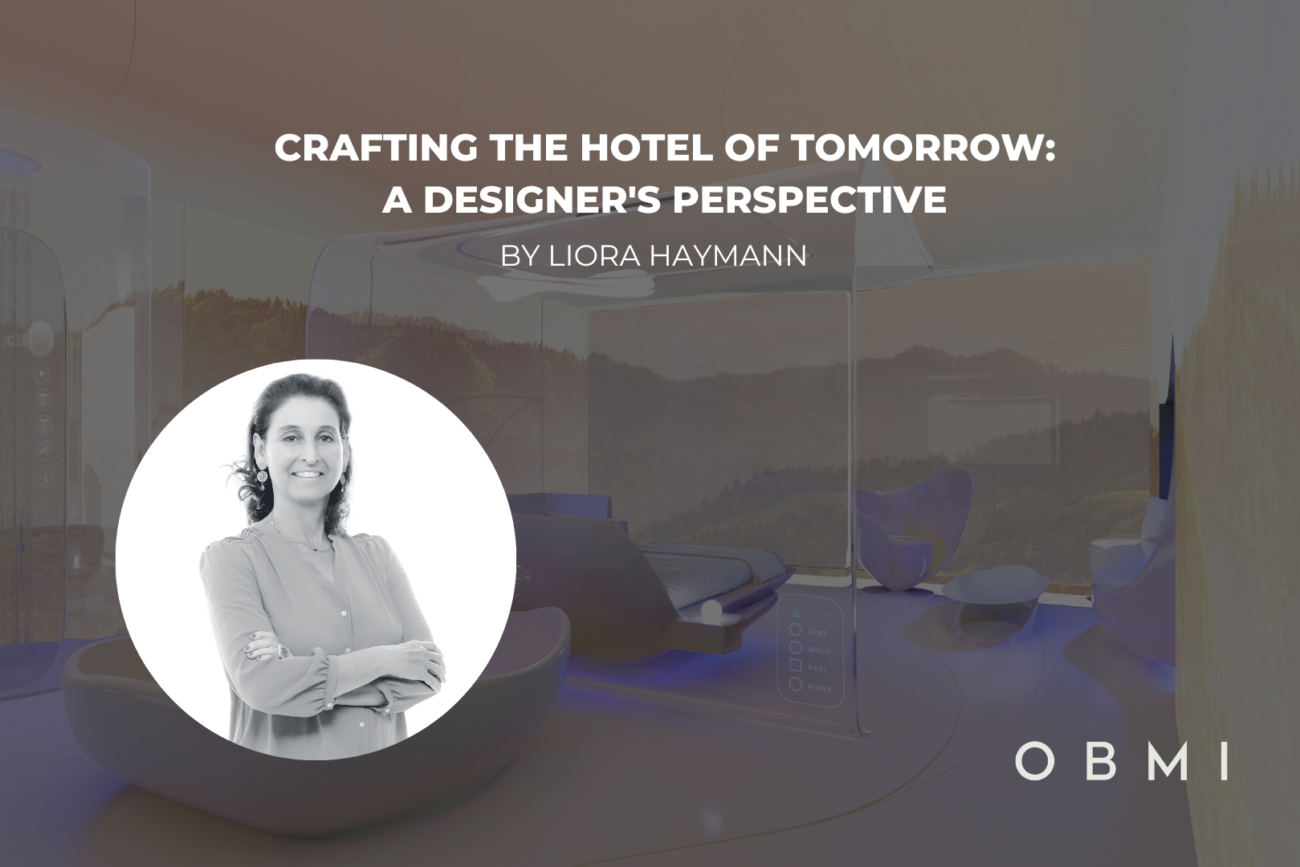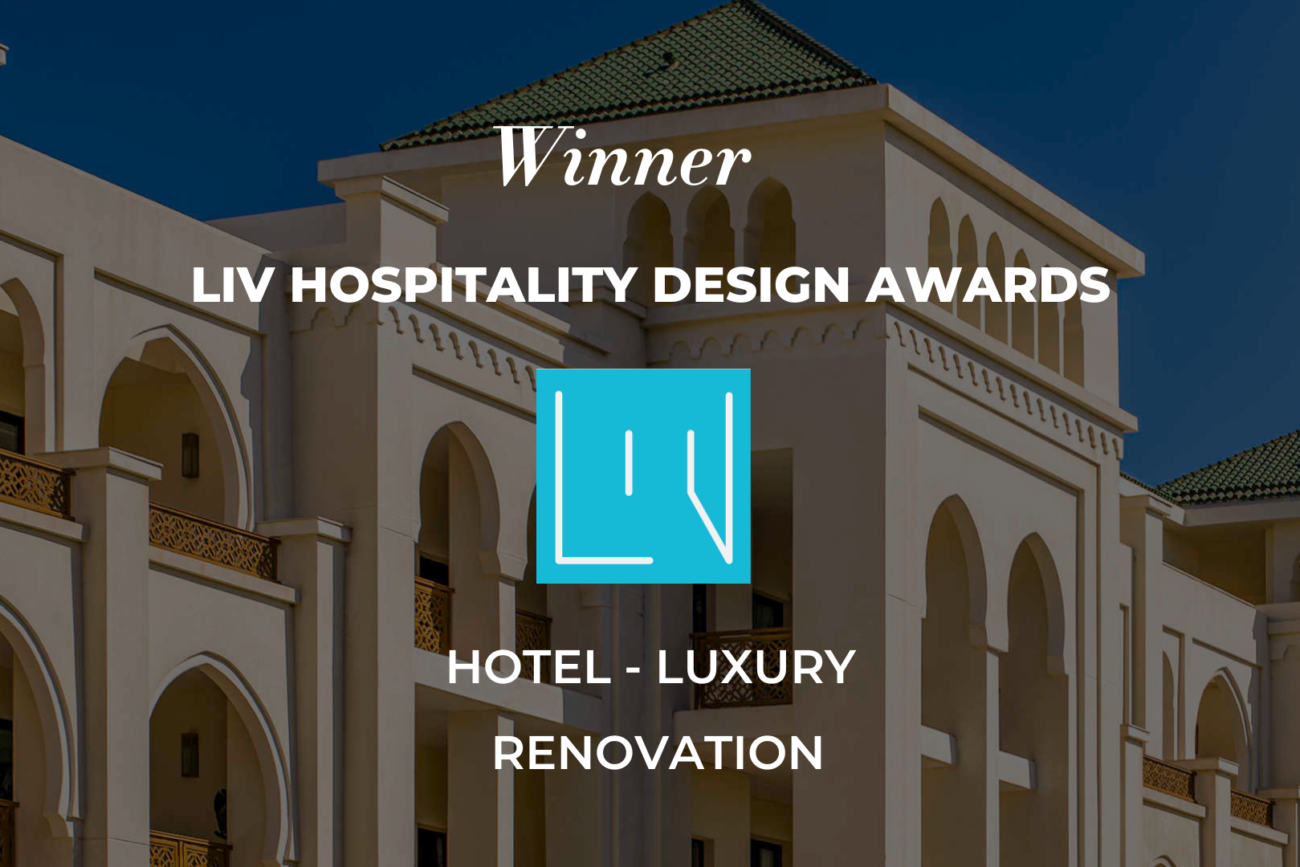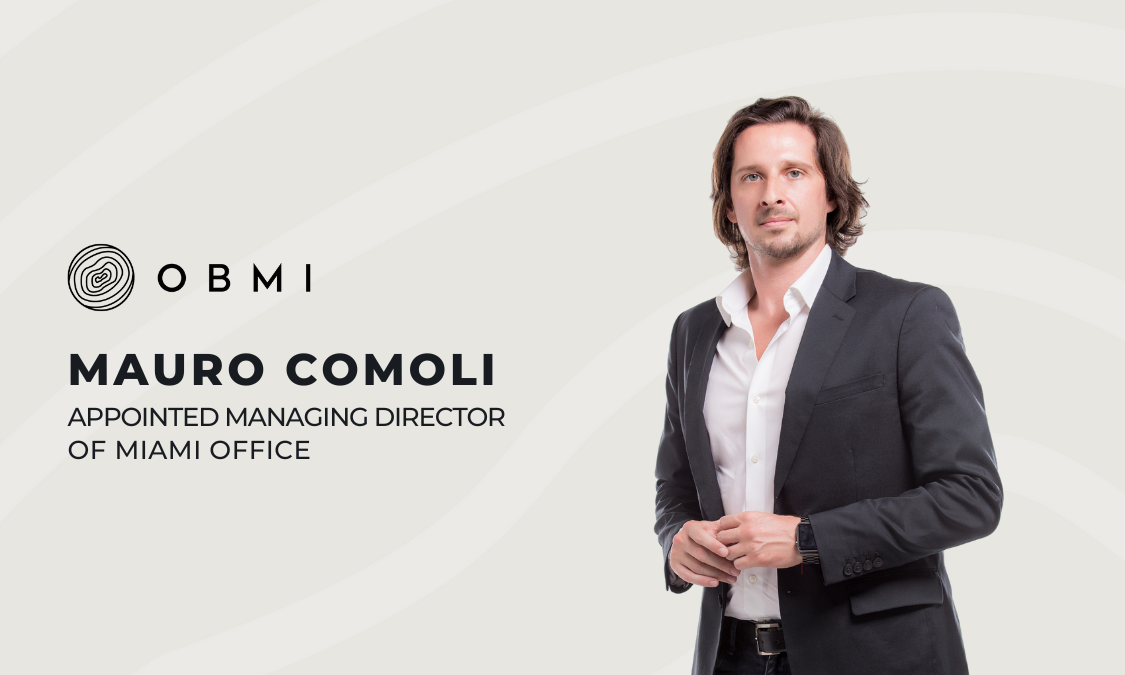MARINA DESIGN FOR MEMORABLE EXPERIENCES
OBMI Designers Join Applied Technology Management to Share Planning & Design Expertise for Marina World Magazine
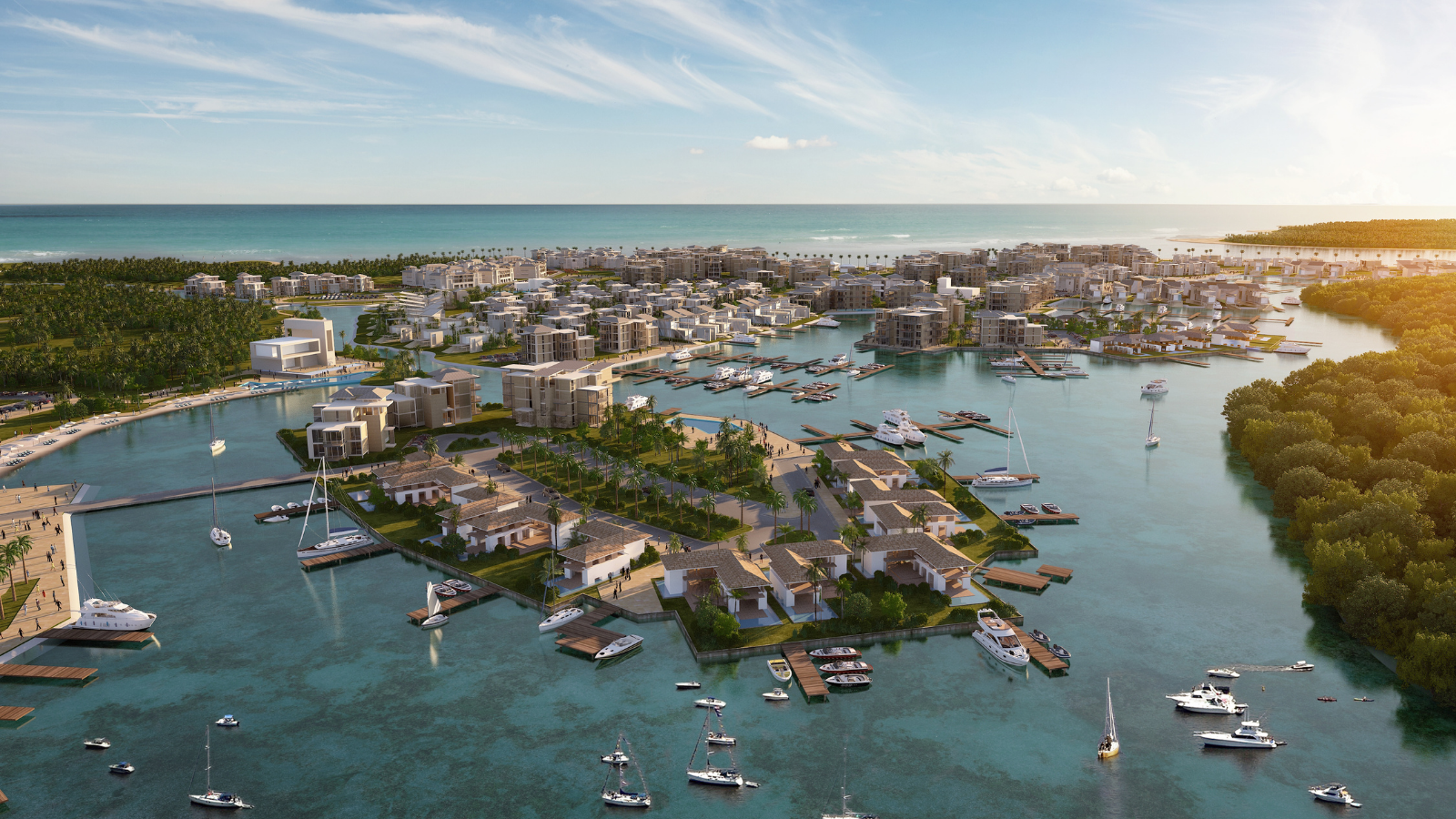
Written by Applied Technology Management Associate Principal Esteban Biondi; Featuring OBMI’s CEO Doug Kulig, Managing Director/Principal Liora Haymann, & Chairman Tim Peck
What characteristic of a successful marina is the most difficult to achieve? I have argued for some time that the most sophisticated quality in a marina doesn’t come from the engineering, architecture or management. Of course, you must do the design, construction and operations right. But there is something more important, which a more comprehensive approach to marina consultancy can help unveil.
Guest Experience
This phrase is now part of our vocabulary but is not understood in the same way by everyone. Guest experience is not only about efficiency, seamless operations, predicting wishes and immediate service. Those issues can be addressed and solved with technology, apps, organisation, logistics, training, etc. The other and most unique facet of “guest experience” is the one that deals with words like memorable, authentic, personal, profound – even transformational. If you can recall a story years later, you probably had a memorable experience. And maybe you realise that your deepest impressions are those that relate to the people from a place, rather than the landscapes or its buildings. This approach leads to the design objective that “the physical plan must enhance the opportunity for local people to have access to the project and interact with visitors in a positive and synergistic manner.” But let me tell you a couple of stories.
It’s About The People
About 20 years ago, I read a book called “The Experience Economy”. I was also reading everything I could find on sustainable tourism. At the time, I was directing a cruise destination study in Patagonia. That was a very exciting personal time, which combined my memories as a tourist in the region, my recent work experience with cruise destination projects for the cruise lines in the Caribbean, and trying to find a win-win solution for a beloved part of my country. The book presents the academic and analytical business case for the value of experiences and presents examples of large hospitality companies. At the time, no one I knew uttered the phrase “selling experiences”. But I was reading it to apply its lessons in a place of rough natural beauty, with pioneer culture and tough people whom I wanted to benefit directly from the project that I was studying. So “authentic and personal” had a very special meaning to me. I realised that my most memorable experience as a tourist in Patagonia was one with local people, on top of the unbelievable landscapes and treasured moments with loved ones. I also met outstanding people and local characters as part of my work, and some friends that I made on the way brought everything back with their book “Portraits of Southern Patagonia”. I may say that about that time I had my “It’s The People” moment.
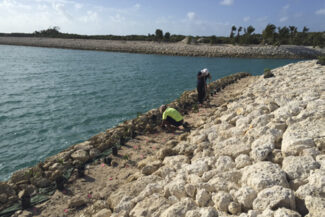
After proposing a marina basin with a mangrove shoreline, working with Doug Kulig of OBMI, ATM scientist Greg Braun trained volunteers of the Exuma Foundation to implement the planting.
A Sustainable Planning Approach
These early ideas evolved over many years and included fruitful discussions with eco-lodge designer Hitesh Mehta, Joe Koechlin of Inkaterra, and many others. I was always searching for the way this approach could be implemented in a way that is also justified on purely financial terms for a private business. ESG (Environmental, Social and Governance) criteria was not part of the language when I started this; sustainability was not a high-profile concept; and “experiences” was not yet part of the vocabulary of hotel developers. However, when making presentations about the approach for planning sustainable marinas, I said things like: “the best human resources for delivering authentic and memorable guest experiences are in the local community.”
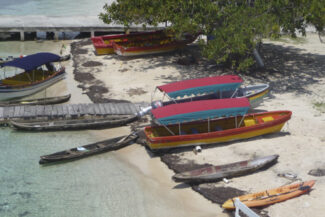
The Kokuye project proposes yachting infrastructure to support access to the San Blas archipelago in collaboration with the local Kuna community. Docks for authentic local tourist boats are included in the plan.
It Takes a Team
While sometimes I am the one bringing up this approach in a project, there are times when the concept is already a fundamental part of the vision. But it always takes a team. I started talking about how Puerto Los Cabos has a dedicated sub-basin area for local fishermen. But I have proposed plans rooted in the same principles in multiple projects for almost two decades. With Liora Hayman of OBMI we created a fishermen’s village nestled in restored mangroves south of Puerto Vallarta, among other projects throughout Latin America, the Caribbean and even China. With Stephanos Polizoides, George Moreno and Liora Hayman we designed a portion of a resort waterfront for the local Kuna boats of the Caribbean coast of Panama. With Marco Larrea of EDSA we planned local tour operator’s docks for Serena del Mar in Colombia, at the request of Rafael Simon del Castillo and his development team.
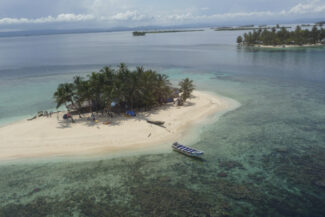
Finding opportunities to improve the master plan with a practical approach regarding permitting modifications, we reconfigured the marina basin with a market-driven and functional approach, while incorporating unique environmental design features to the marina.
With Scott Lamont and Lei Xiao of EDSA we proposed in China an area designed to accommodate the existing junk boats, recommending the local government to keep them as a tour operation (we were later told that their previous plan was to completely replace them). With Chris Craig and the WATG team, we worked to plan smallboat tour operator docks in a system of marinas and island resorts for The Red Sea Project (Saudi Arabia), with the support of Ian Williamson and his team. In Costa Rica, this approach was embraced by the new owners of Marina Golfito and we are now working on a project near San Carlos (Mexico) where the fishermen’s dock and a sea-totable programme are part of the same plan, strongly supported by the owner’s foundation.
Proactively including ecological features as part of the marina design is also a fundamental principle of sustainability that can also be tied to the local community. With Tim Peck of OBMI we proposed a mangrove restoration, amenity and coastal protection plan for the redevelopment of the Ritz Carlton Grand Cayman, where field work was done in collaboration with the Cayman Islands Department of Environment and the Ambassadors of the Environment programme. With Doug Kulig of OBMI we proposed a marina basin surrounded by a mangrove shoreline in the Exumas (Bahamas).
There is a potentially profound win-win outcome if you can achieve the goal of community inclusion. Tourism services set the stage for memorable guest experiences and have direct economic benefits. The project developer and operator get the immense intangible value of creating a destination with soul… and the tangible benefits are measured by unique market appeal, higher occupancy and increased rates. It is not a smooth or spontaneous process. After working on these ideas for two decades, I am starting to believe that it never ends.
There is a potentially profound win-win outcome if you can achieve the goal of community inclusion. Tourism services set the stage for memorable guest experiences and have direct economic benefits. The project developer and operator get the immense intangible value of creating a destination with soul… and the tangible benefits are measured by unique market appeal, higher occupancy and increased rates. It is not a smooth or spontaneous process. After working on these ideas for two decades, I am starting to believe that it never ends.
It is not easy to propose ideas that are not mainstream when you don’t know how they will be perceived. Moving forward with these ideas requires a developer that is either open minded, predisposed or already fully committed. It also needs supportive design team partners. Last in this list, but first in importance, the implementation of these ideas requires a substantial commitment by the development and operations staff that work with the community.
Implementing Social Sustainability (or the “S” in ESG)
I have been saying for a while that the sustainable marina planning strategies that I promote, even if rooted in these principles, can only make a difference to the physical design. I like to say that marina planning with this vision is “necessary but not sufficient”. The master planning process can “plant the seed” of the concept; in the plan we can “reserve” the space and “label” the dock and upland area with a function; and eventually we can build a dock the way we proposed. But the inclusion and beneficial collaboration that achieves the goal of setting the stage for personal experiences does not happen spontaneously. In fact, there are more examples of conflicts than of successful synergistic relationships.
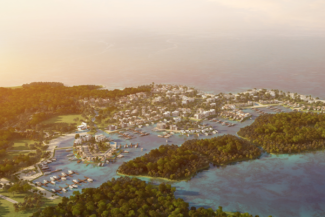
For the Kokuye project on the Caribbean coast of Panama, an excavated marina basin was planned that integrates a mangrove fringe into the design.
Paraphrasing Jack Kheel (Puntacana Foundation, Dominican Republic) “you can tell the story of how our programme with the local fishermen, their families and the resort works, but to get there, we failed in multiple previous attempts.” I remember a meeting with Clara Diago (Fundación Corplaya) that was briefly interrupted by a call from a local community representative complaining about no potable water being delivered to the town. The mangrove planting for the marina in the Exumas was led by Catherine Booker (Exuma Foundation), under the technical direction of ATM’s Greg Braun, resulting in the training of Bahamian youngsters in ecological restoration tools. It took years to get to that point but I was so happy when I got the photos of the planting!
I have intentionally “named names” – even at the very high risk of leaving out names that should be listed – to thank some of the people who contributed through their collaboration to promoting innovative ideas that make projects unique; a process where I have benefited greatly, both personally and professionally. Contact our international architects today to learn more.
www.marinaworld.com – May/June 2021
Esteban Biondi is associate principal at Applied Technology & Management, Florida, USA.
E: [email protected]




